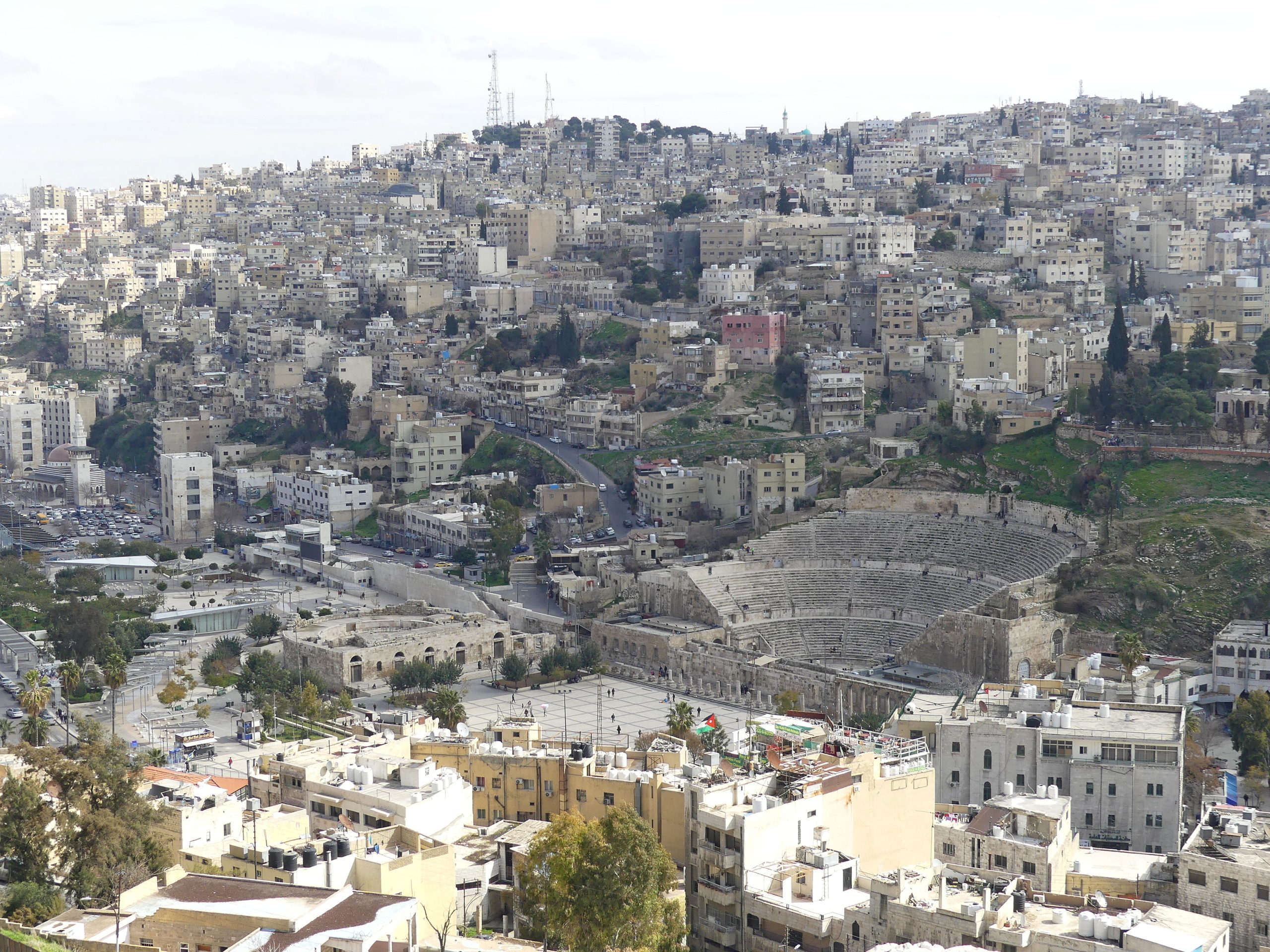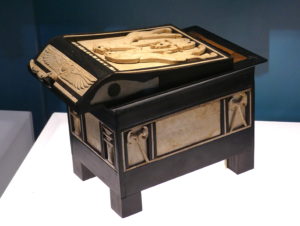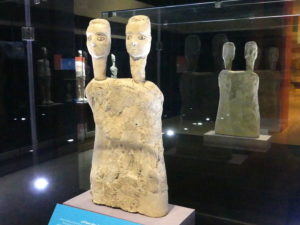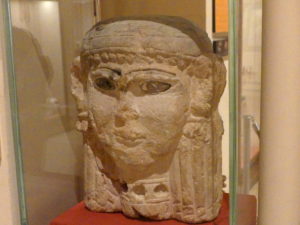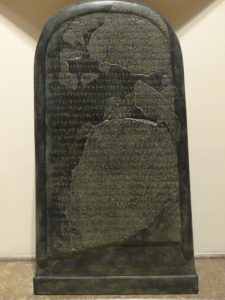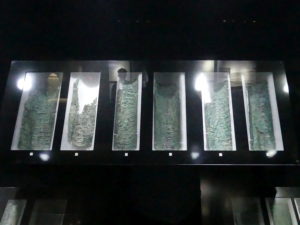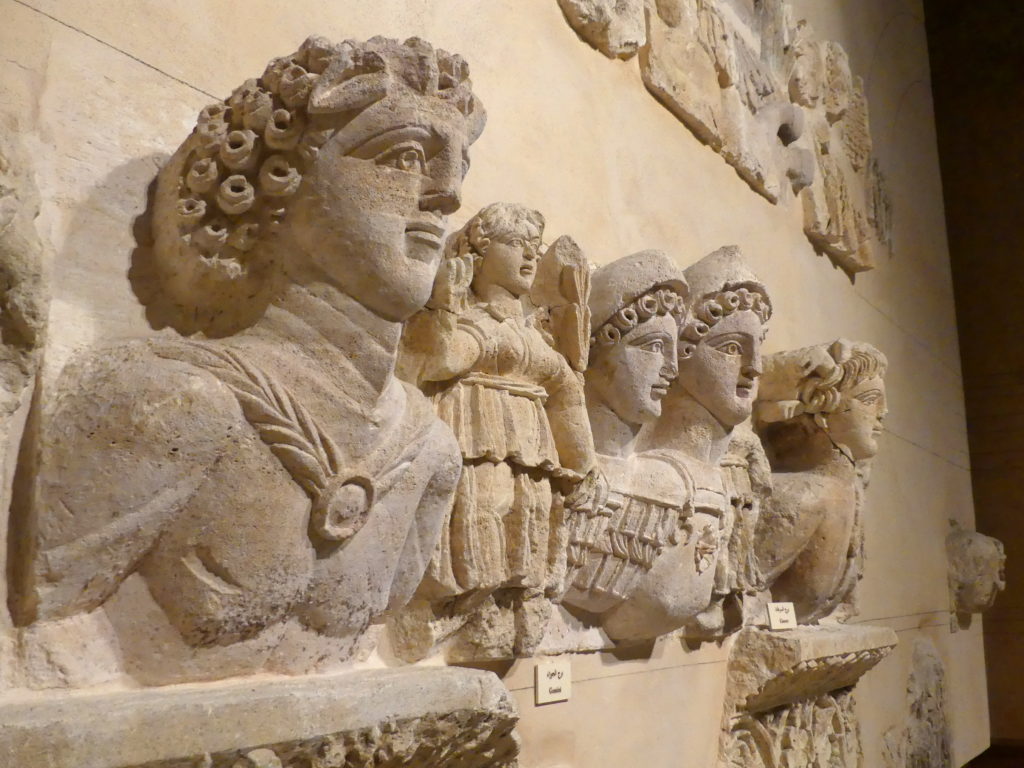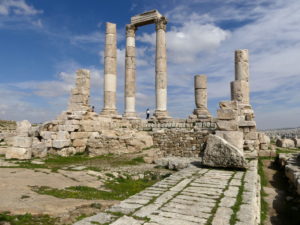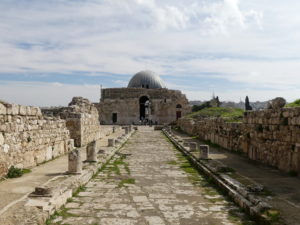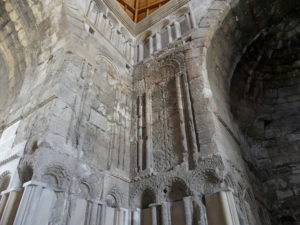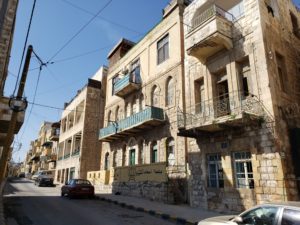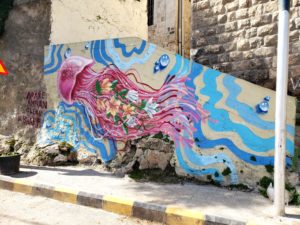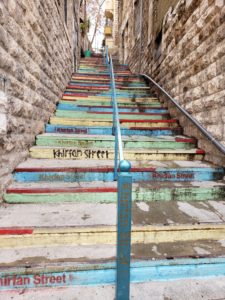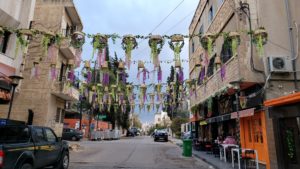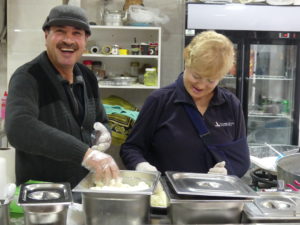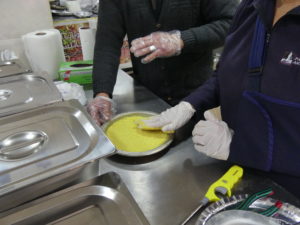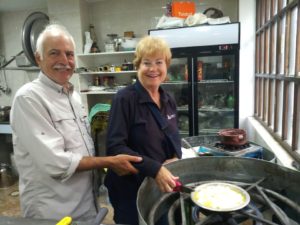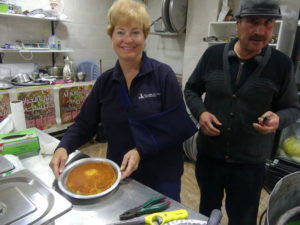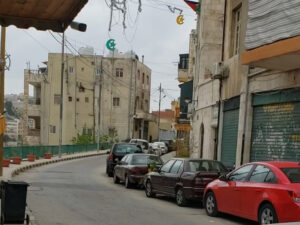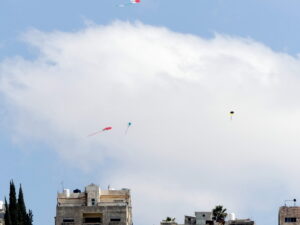Amman, the capital of Jordan is both ancient and new.
The site was occupied back to the Neolithic age, some 10,000 years ago, then flourished under the biblical era Ammonites some 2 to 3000 years ago until Greek and Roman occupiers re-built the town to their liking through the early Christian era. By the 7th century AD, Muslim Umayyads controlled the location until the devastating 749 earthquake.
Time travel at the Jordan Museum
This rich legacy – and more from tens of thousands of years of pre-history and history in a region that was a center for trade around the known world – is well documented and exemplified by exhibits in the Jordan Museum near the central city.
Walking through the millennia here, you can appreciate the ebb and flow of empires through the remarkably preserved artifacts on display.
The best example of that international interchange was this little box with a large heritage. It attests to the extensive cross-cultural exchange in the Jordan area, because of trade, from 3000 years ago. The black material is ebony from Ethiopia; the white ivory most likely from Syria. As the box dates from occupation of the town of Pella by Egypt, most of the decoration is Egyptian in nature, including the winged sun as well as the lions and serpent on top. But scholars also see Persian, Mesopotamian and Anatolian influence in the design.
Walking back in time…
Other than very early stone age artifacts, these are some of the oldest pieces in the museum – dating from about 9000 years ago. Indeed the 30 or so similar statues found at Ain Ghazal in the Amman area are among the oldest statuary ever discovered in the world.
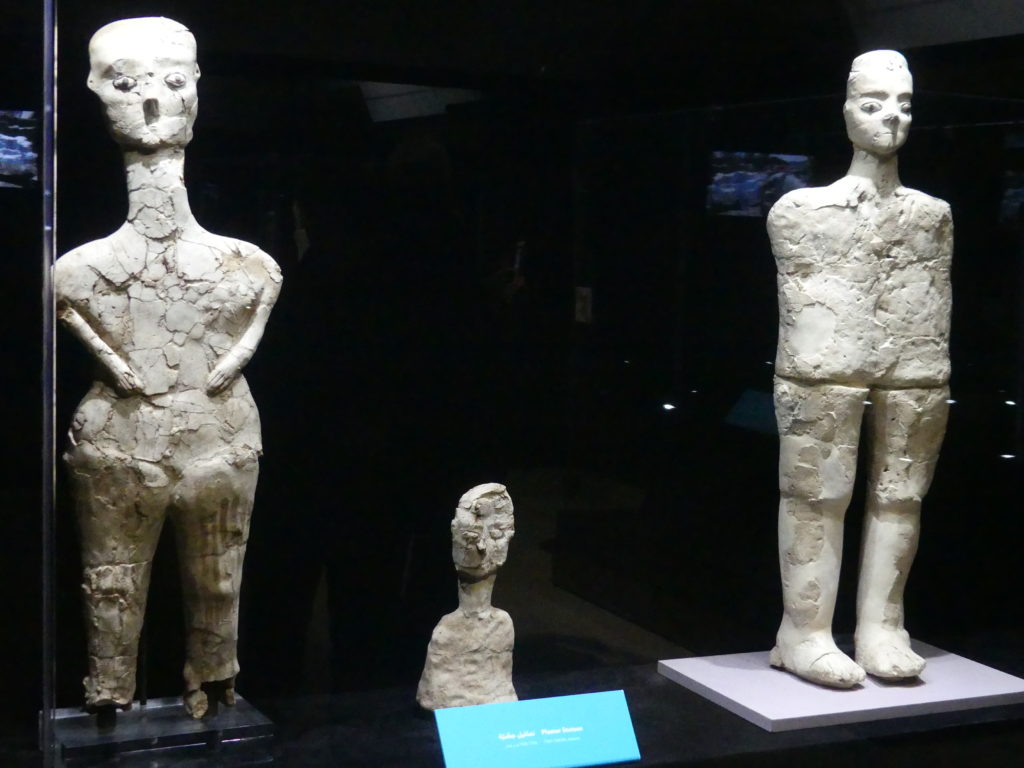
They are made from reed structures covered with a plaster formed in a complex process from limestone. The statues were buried in a manner similar to human remains found in the same area, suggesting they had some ritualistic funerary purpose. Today their eerie expressions and ghostly look haunt the imagination still.
Another 9000 year old plaster statue from Ain Ghazal in the Amman area. This two headed being could represent a couple buried together.
Go forward a thousand years and you can find 8000 year old double-faced heads of Astarte, found atop the Citadel in Amman, home of the ancient Ammonites. Only her ivory eyes remain of her fancy adornments. Most likely, one face looked at the praying visitors and the other side stood watch over the priests. We were not sure which of the two faces this was.
On to Biblical times…The Mesha’ stele, or Moabite stone, is a somewhat gruesome declaration by the Moabite King Mesha’ of the destructive force he brought against the Israelites. It echoes the Old Testament account from the Israelite perspective in Kings II, 3. Some 2800 years old, it is the principal written record of the period and the Moabite culture, as well as one of the earliest confirmations of Old Testament historical accounts.
The stele’s own history is quite incendiary as well. Coveted by several different imperial countries after its discovery in 1868, a local Bedouin tribe burned it and broke it apart, defying their Ottoman rulers’ interest. A prior papier-mache imprint and the shards of the stele were spirited away to France, making it possible for archeologists there to re-create the monument and put it on display at the Louvre. Though Jordan wants that “original” copy back, it must put this poorer copy on display instead.
Around the same time, the authentic stele below, made by the Biblical era Moabites, depicted, it seems, a king and two attentive gods in an Egyptian style.
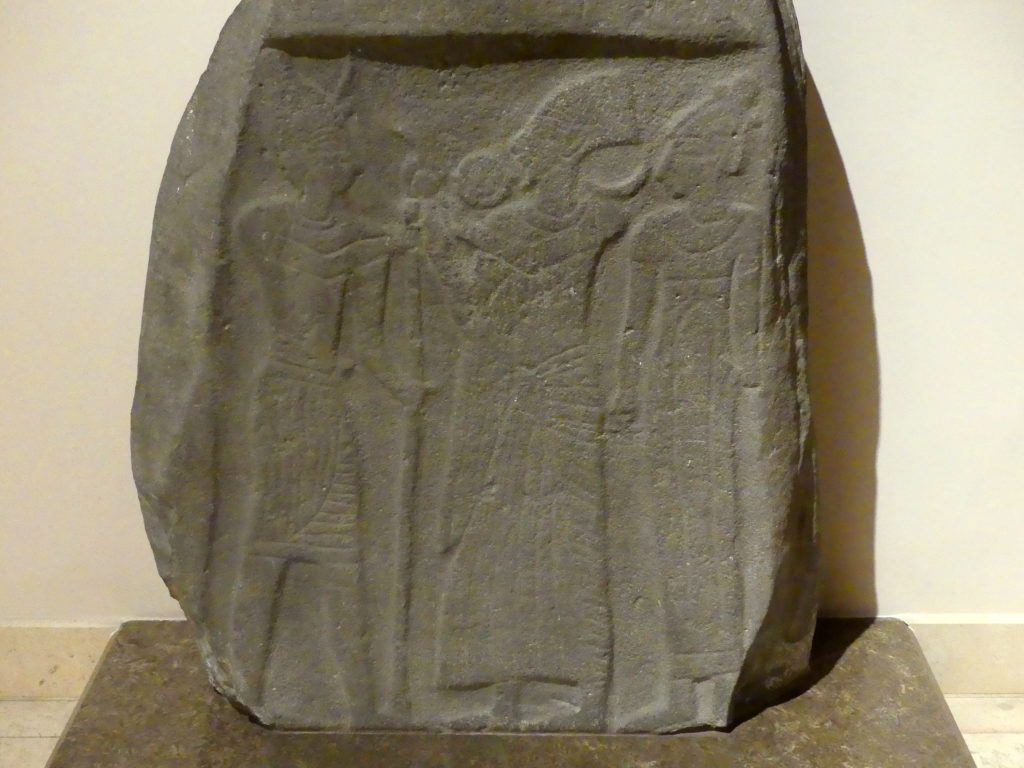
Onto a portion of the Dead Sea scrolls, whose 2000-year old papyrus text spans four centuries. They comprise one of the oldest manuscripts of books in the Old Testament, as well as other ancient texts not included in the Bible.
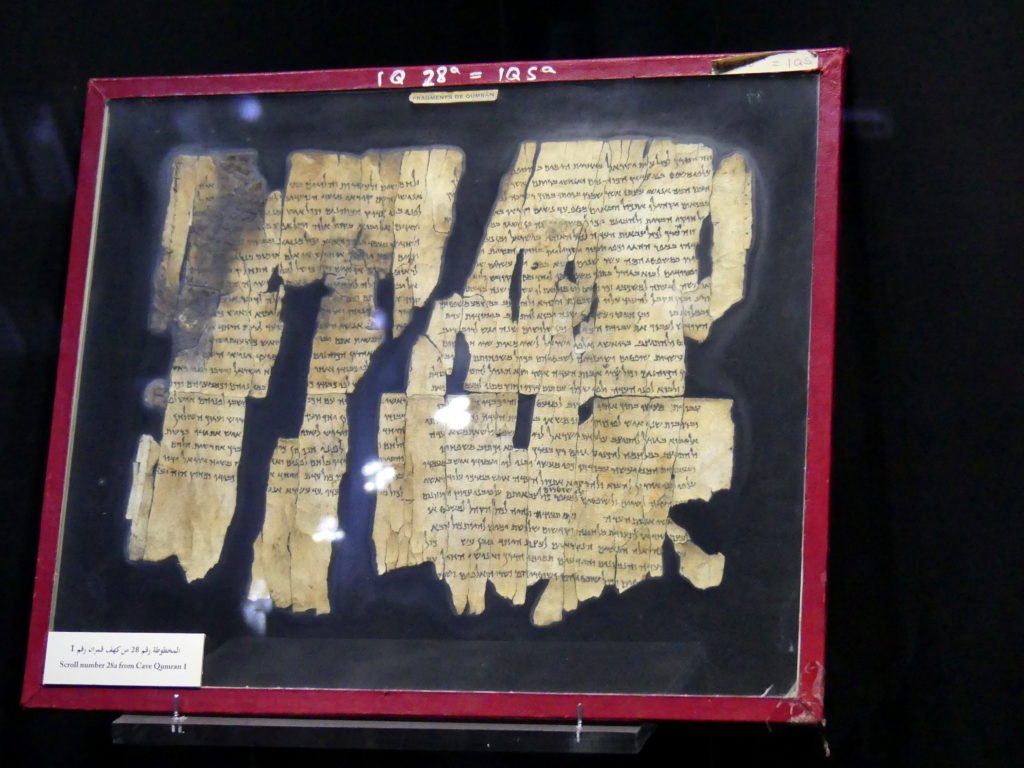
The scrolls were found in a cave in Jordan some 70 years ago. Several examples are on display at the museum. As with much else in the Middle East, ownership of the scrolls is intensely disputed. Most are stored in Jerusalem.
More of the Dead Sea scrolls. We knew nothing of the ones in the photo, pieces of a single copper scroll probably made by the ascetic sect of Jews, the Essenes, and dating from after the destruction of the Jewish Temples. The text of the scrolls appears to lay out a treasure map, documenting the location of 64 caches of gold and silver hoards, perhaps from the temples. People have looked for the treasures without result; some think the scrolls are a hoax.
These zodiac figures in a Classical style adorned the frieze of Adh-Dharih temple, some 10 meters (33 feet) above the ground. The Nabataeans, whose southern Jordan kingdom flourished for over 700 years, built the temple around 100AD, the same time as they were carving out the magnificent tombs of Petra. The figures from left to right are: Taurus, Libra, Gemini, Cancer, and a shard of Sagittarius
Around the central city today
Even just walking around the central city, we could still find evidence of each of the main historical periods in Amman – Ammonite, Roman, Umayyad.
From the Citadel, the high point of the old city, the view over the hills of central Amman includes several Roman structures.
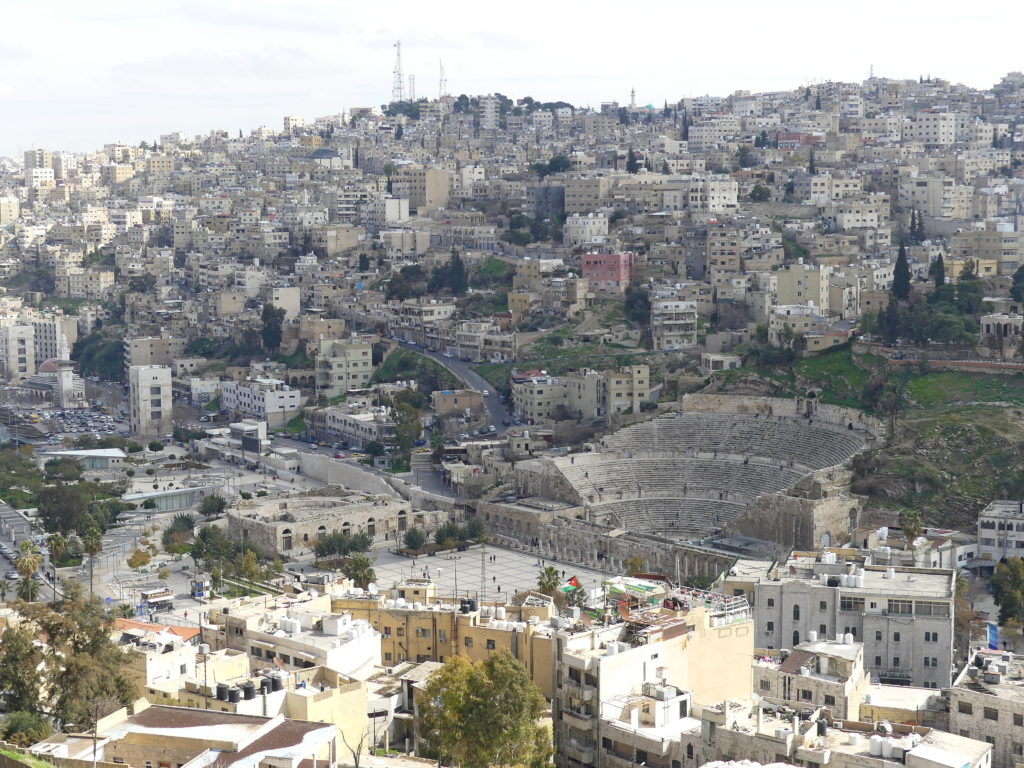
In the valley we could look onto the three-tiered Roman amphitheatre, the plaza of the old Roman forum, a smaller theatre called the Odeon and a colonnade of Roman columns – still here after nearly 2000 years.
The entire area of the Citadel is a sprawling plateau atop the tallest hill in central Amman. It has attracted the most important structures for the residents since the Bronze Age. One of the most notable is visible from around the town, the remains of the Roman era temple honoring Hercules.
After Rome converted to Christianity in the 4th century, a large Christian basilica dominated the plateau of the Citadel. By the 7th century, Islam had spread through the Middle East. Soon Muslim Umayyads constructed a magnificent palace in the same hilltop area.
This domed meeting hall, whose other side opened onto a grand plaza and marketplace, was designed to impress dignitaries and visitors as they waited for an audience with the leaders of the Umayyads. The sheikhs occupied the residential space at the near end of this colonnaded walkway. The massive earthquake of 749 ruined the palace after only a couple of decades of use.
Within what remains of the interior of the Umayyad meeting hall at the Citadel, detail gives a faint idea of the grandeur built into the structure. At the top of the image, you can see a tiny bit of the wood latticework of the dome, a recent reconstruction by Spanish architects.
But then Amman virtually vanished as a city until the late 19th century, when it was re-booted by the Ottomans. Now it has grown to accommodate about 4 million people, one of the largest of Arabic cities and, as we discovered, a regional hub for medical tourism.

In the valley below the hills in this panorama, you can see a boulevard. Such routes along the narrow valleys are typically lined with stores and foot-traffic. The most notable of these boulevards is Zahran Street, which connects eight roundabouts, numbered 1st circle to 8th circle as you go west, the main organizing principle of Amman’s central districts. Where is your store? At 4th circle…
Amman’s seven hills are carpeted by low lying buildings three to five stories in height depending on the pitch of the hill they are on. All harmoniously blend cream and sand tones – lovely at any time, but especially aglow in afternoon light.
There is some typical scrawled graffiti scattered around town, but most of the street art consists of large scale, semi-professional work, such as this. Here and there, huge faces might cover the exposed walls of buildings. As the sign says, they help “make Amman clean and sharp.”
Winding by car across these hills often means circuitous and slow-moving passage, with absurdly narrow two-way streets and one-way streets inevitably opposing the direction you want to go. That’s what makes the boulevards between the hills so much quicker once you reach them.
On foot, instead, we can take advantage of the numerous stairways cutting up and down the hills, steep but usually the quickest, most direct passage.
This colorful one connected our apartment on Khirfan Street with the popular district known as Rainbow Street – home of many restaurants, bars and shops that attract locals and tourists alike. Though it does head uphill toward Rainbow Street, the stairs actually stop short of the district, making for a bit of confusion for wanderers. Nor is it the only rainbow-colored staircase in the central city.
Several side streets leading away from Rainbow Street are decorated in simple, but engaging fashion.
Khirfan Street dates from the time of a savvy merchant and builder in the 1920s whose family still occupies the neighborhood.
About 30 meters (100 feet) straight below us, reached by any number of staircases or some steep roads, are the lively and bustling outdoor markets, or souqs, of central Amman.
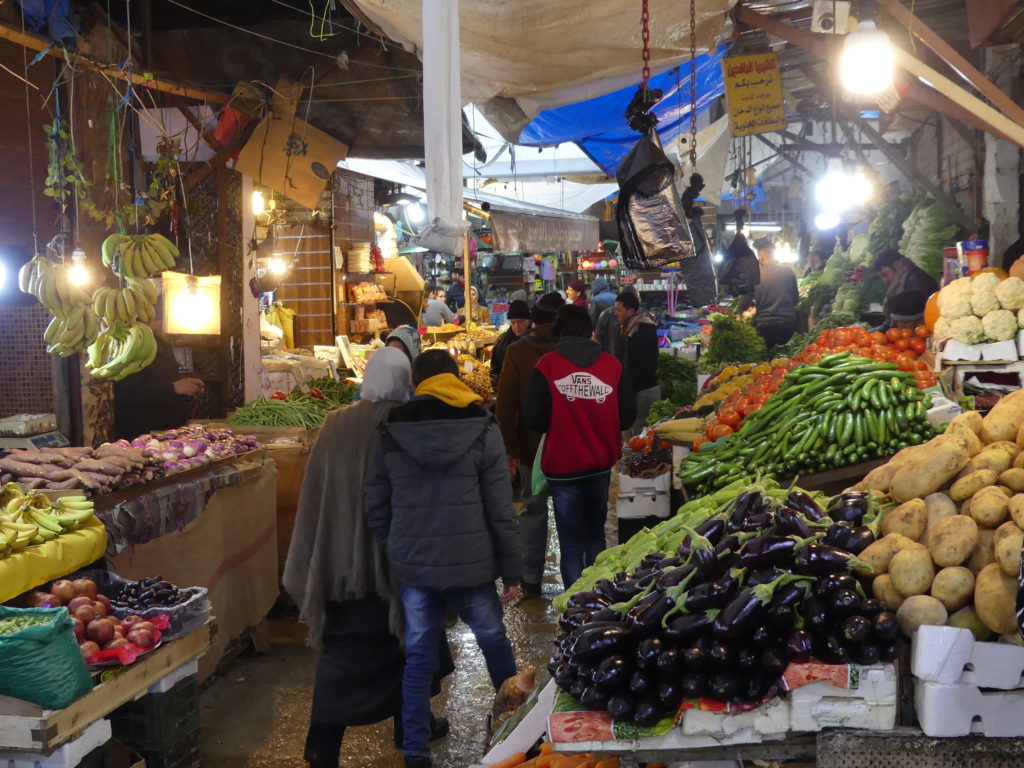
In addition to the typical small shops that serve Jordanians, one can delve into an array of market stalls separated by crowded, narrow lanes. Here you can buy just about anything: produce, hardware, clothing, mobile equipment, spices, sweets, and more.
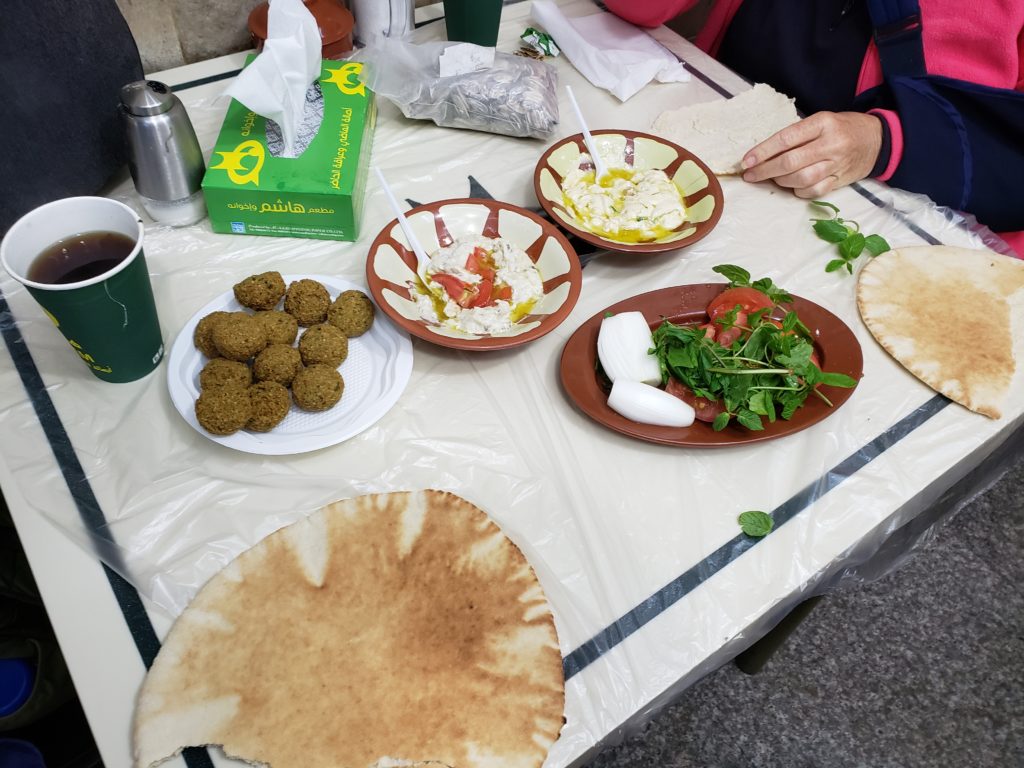
At the ever-busy, no-frills eatery of Hashem near the downtown souks, the restaurant is laid out like a maze with rooms opening off an outdoor alley where you can also sit and eat. Servers lay a sheet of plastic on the table so the surface is clean and cleanable. You can have anything you want to eat as long as it’s falafel, hummous and baba ghanoush with pita. Sure, they say, you do want tea with that.
Food – and hosts – fit for the gods
We have happily noted the hospitality of people in so many countries we have visited. Jordanians, perhaps, have outdone them all.
In the first photo, you can appreciate the warm smile of Hosam, the owner of a sweet shop on Khirfan Street in Amman. We certainly appreciated how caring he was when Nancy broke her arm a few meters from his shop. He brought her into the shop, arranged for an ambulance to bring her to a good hospital, continually asked after her condition, and offered us coffee, tea, refreshment whenever we passed his shop afterwards.
Because his place is a haven on the street, particularly with the extended Khirfan family around Khirfan Street, we have had the chance to meet so many other caring people there too. Then we discovered he could teach us how to make the Jordanian specialty dessert of knafeh, a cheese-based sweet.
Nancy did well preparing the dish with Hosam: laying down the ghee, prepared flour, cheese, chopped pistachio and love in just the right proportions.
After spreading a layer of ghee, we add the prepared flour (mixed with ghee and other goodies) to the cooking plate.
With a wrench in her good right hand, and her left still stuck in a sling, Nancy turned the platter on the large stove, while Barry backed her up.
The finished dish, ready to flip over carefully and sprinkle a bit of light syrup.
What left? The two of us prepare to dig in to the knafeh…and made short work of it. It was delicious. Shukraan jazilaan lak, Hosam, our good friend!
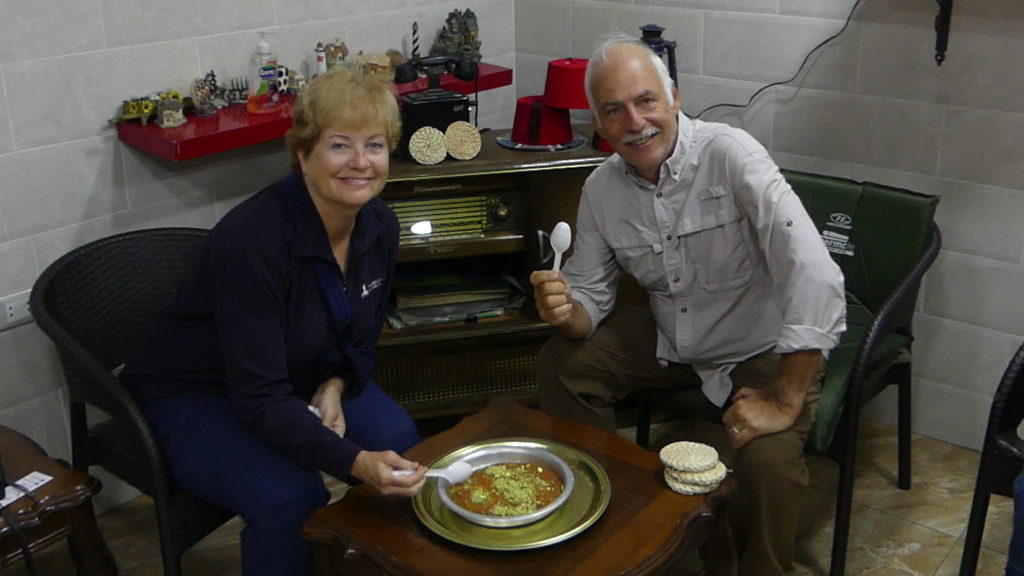
How wonderful for us that Amman proved to be just as heavenly in so many ways.
(To enlarge any picture above, click on it. Also, for more pictures from Portugal, CLICK HERE to view the slideshow at the end of the itinerary page.)


